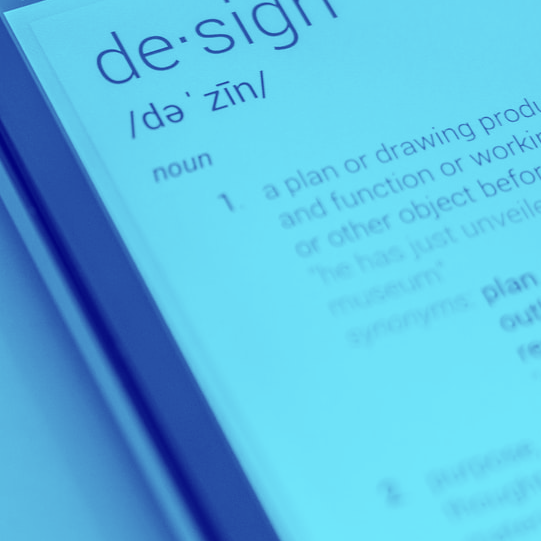Measures open scientific production published by researchers from Catalan universities.

Open knowledge at the UOC
What is open access? Which are its benefits? The open access publishing strategies, its legal framework, and much more.
- What is open knowledge?
- International Open Access Week at the UOC
- The UOC's institutional repository, O2
- Intellectual property of open-access publications
- Publish final projects and teaching resources in open access
- Open-access scientific output
- Why opt for open-access publication of your doctoral thesis?
- Research Data Management
- It's open
O2 Repository UOC
It is the institutional portal that compiles, disseminates and preserves the UOC community's open-access digital publications.
What is open knowledge?
Knowledge is one of the key elements for achieving the 2030 Agenda. Universities must become spaces that facilitate discussion and the collaborative, transparent creation of knowledge and that can incorporate approaches and ideas, whatever their origin. Universities must also ensure that the knowledge they generate is open, that is, available and accessible, under conditions that enable its reuse, redistribution and reproduction
At the UOC, we are committed to transformation through becoming a knowledge hub. This involves opening up the University in all ways and making it into a more porous institution, with two-way connections to various stakeholders and groups in society.
What is open access?
The open access (OA) movement is the outcome of the electronic publishing facilities and Internet. This movement advocates permanent, free access, without restrictions imposed by certain exploitation rights, to scientific, academic and educational contents with the goal of fostering their accessibility and impact for the benefit of science and society.
International declarations about open access:
- (2002) Budapest Open Access Initiative (BOAI)
- (2003) Bethesda Statement on Open Access Publishing
- (2003) Berlin Declaration on Open Access to Knowledge in the Science and Humanities
- (2012) San Francisco Declaration on Research Assessment (DORA)
Open access benefits
- Increased visibility of scientific literature.
- Increased impact of publications: increase in citations of authors and publications.
- Perpetual access to documents.
- Easy retrieval of contents published in open access.
- Guaranteed preservation of research results.
- Increased visibility of institutions.
(Font: REBIUN)
Open access publishing strategies
Self-archiving: green route
Self-archiving in institutional repositories, such as the O2, or in thematic repositories, enables the following:
- Publication of a copy of the articles (published and reviewed).
- Publication of the version sent (preprint), accepted (postprint) or published (publisher's PDF).
- Access to publications with the possibility of free access, embargoed access or restricted access.
In the case of scientific publications, you must consult the self-archiving policies of the publishers where you have published your works:
- International: SHERPA/RoMEO
- Spanish: Dulcinea
Open-access journals: gold route
The gold route consists of publishing in journals that do not charge any subscription fee for access to the articles, but which have business models that enable them to cover their publishing expenses (for example: an author pays to publish in open access).
Hybrid model
With the hybrid model, the journals publish the articles with immediate open access after the author or institution owning the articles has paid a fee to finance access.
Legal framework
Dissemination of open access
The contents of the UOC's micro-MOOC on open knowledge
A free online course on open knowledge taught via the @moocmicro Twitter account.
The open access institutional repositories
What is an institutional repository?
According to the definition given by Crown (2002) for the Scholarly Publishing Academic Resources Coalition (SPARC) in The Case for Institutional Repositories: A SPARC Position Paper, an institutional repository is “a digital archive of the intellectual product created by the faculty, research staff, and students of an institution and accessible to end users both within and outside of the institution, with few if any barriers to access. In other words, the content of an institutional repository is:
- Institutionally defined;
- Scholarly;
- Cumulative and perpetual; and
- Open and interoperable."
Cooperative repositories in which the Open Science Office takes part
- TDX, doctoral theses on the Web
- RACO, open-access Catalan journals
- RECERCAT, Catalonia's research depository
- MDX, teaching materials on the Web
- CORA. Research data repository
Repository directories
International Open Access Week at the UOC
The end of October every year sees the holding of International Open Access Week, an event for sharing and learning about the advantages of publishing free, immediate and restriction-free content. The UOC is taking part, organizing events and providing information on open access publishing.
Previous International Open Access Weeks
2023
We are recommending content for sharing and learning more about open knowledge.
2022
We are recommending content for sharing and learning more about open knowledge.
2021
The UOC's institutional open knowledge policy
The UOC Executive Board approved the Institutional Open Knowledge Policy. Its mission is to establish the institutional framework that will allow the members of the university community to openly share and transfer the knowledge they create as a result of their research, teaching, innovation and institutional administration activities.
Find out about the ins and out of sharing and transferring the knowledge created at the UOC.
An interactive tour to assist you in the process of sharing the knowledge you've produced. . It helps you to understand the steps you have to take by simply clicking on the answers on each page to continue with the process or obtain more information.
News article explaining how the UOC supports open knowledge and how it benefits research staff.
Seminar: "Open knowledge: debunking myths"
On Wednesday, 27 October, from 3 p.m. to 4:30 p.m. (CEST), the UOC is organizing a seminar for University staff aimed at dispelling the myths surrounding open access publishing. It will cover issues such as: open access publishing is more expensive; it does not further your academic career; there's data theft, or we can't guarantee proper use of the data.
This practical talk seeks to dispel four myths about open access publishing.
Open data for understanding the pandemic
The Government of Catalonia's Ministry for Foreign Action and Open Government is organizing a series of Annual Open Government Events to explain to the general public how open government helps improve public policies and democratic quality.
There will be a session involving the UOC on Tuesday 26 October at 4 p.m.: an internet discussion panel on how to leverage Catalan Government open data to promote better communication in real time on what was happening with the pandemic, providing education on its evolution and the decision-making process for both public bodies and individual citizens.
Volunteer voices to help technology talk in Catalan
The UOC is issuing a call for volunteers to add their voices in Catalan and help create open knowledge for apps based on artificial intelligence and language technology, including voice assistants, machine translation systems and chatbots.
This initiative forms part of the Common Voice open platform promoted by Softcatalà.
There are two ways you can participate as a volunteer, as explained in more detail on the Common Voice interactive website: adding your own voice or validating submitted clips.
Editorial UOC takes part in the campaign Abre tu libro al mundo (Open your book to the world)
The UOC is taking part in this campaign with the open access book Decálogo para la mejora de la docencia online. Propuestas para educar en contextos presenciales discontinuos (Ten proposals for improving online teaching. Ideas for educating in discontinuous face-to-face contexts), organized by the Spanish university publishers and libraries working group of the Unión de Editoriales Universitarias Españolas (UNE, Union of Spanish University Publishers) and the Red de Bibliotecas Universitarias Españolas (REBIUN, Network of Spanish University Libraries).
International Open Access Week will see the sharing of books by participating institutions in this section and on social media under the tag #AbreTuLibro. A great opportunity for finding something new to read!
University publishers share their books published under open access.
New collection of open access final projects on gender studies
The UOC's O2 repository recently unveiled a new collection of final projects featuring gender studies-related content.
It contains 19 works covering a range of fields of study at the University, including bachelor's and master's degree final projects dealing with the study of women, men and LGTBIQ-related issues. The collection will be regularly updated with new additions.
2020
International Open Access Week is back – this year from 19 to 25 October – to raise awareness of the benefits of the open access movement. Over seven days, participants will be organizing activities and disseminating information to promote access to academic content for anyone, anywhere in the world, online, free of charge and permanently.
The UOC has prepared a range of contents to mark this annual event as part of our commitment to knowledge and open science and our contribution to solving the global challenges of the 2030 Agenda.
Results of the Open Knowledge Action Plan
This new information graphic looks at the key points of the UOC's Open Knowledge Action Plan. The action plan was launched in 2018 with the aim of opening up the knowledge generated at the UOC in order to contribute to its globalization and raise the profile of the excellent research and teaching it carries out.
The UOC's Open Knowledge Action Plan is structured into six core areas for the promotion of open publications, open research data, open learning, open innovation, a university open to society and new research assessment models, in addition to a further three universal branches of work focused on training, communication and awareness raising in this area; open infrastructure development; and participation in leading forums with regard to this reality.
Defining a new open knowledge policy
There is an open knowledge policy in the works. Want to help design it?
The UOC is planning to launch an internal, transparent and collaborative participatory process to define, implement and disseminate a new open knowledge policy involving the participation of its teaching and research staff. The aim is to adapt the current policy, drawn up in 2010, to the advances made in the fields of open access and open science in recent years.

Glossary of open terms
To learn more about the open access movement and open science, we offer a short glossary with the definition of twenty frequent terms.
The UOC's institutional repository, O2
The UOC's O2 repository preserves and disseminates nearly 14,000 contents produced as part of the UOC's academic and research activity.Since the Open Knowledge Action Plan was put in place, the number of scientific articles deposited in the O2 has increased significantly, rising from around 300 articles to over 2,000 in the last three years alone.
In the repository, you can also consult teaching and learning materials (final degree projects, continuous assessment activities and open learning resources), other research documents (data, book chapters, doctoral theses, conference papers and reports) and institutional documents.
Open books by Editorial UOC
This year, to promote online teaching during the lockdown, Editorial UOC has, for the first time, published in open access a collection of around 80 e-books on social sciences and the book in Spanish Decálogo para la mejora de la docencia online. Propuestas para educar en contextos presenciales discontinuos.
During Open Access Week, Editorial UOC is taking part in the Vives Network campaign with the book La Comunicació no verbal by Teresa Pont i Amenós.
Emergency online teaching
In this guide, you will find a collection of tools and a readings that UOC experts shared during the various sessions as part of the "Emergency online teaching" initiative carried out in the midst of the lockdown. More than 9,000 teachers from 47 countries took advantage of the training sessions to learn about other possibilities for teaching online.
Open education for educational change
Open educational resources (OERs) have been created to help usher in educational change. Unlike other materials, thanks to their licence, they promote use, reuse, redistribution, remix and sharing. We have prepared some materials for you to learn more about them:

Retain, Reuse, Revise, Remix and Redistribute.

Copyright, Creative Commons and Copyleft.
2019
The Universitat Oberta de Catalunya will be running a free online course on open science from 21 to 25 October, coinciding with International Open Access Week. Its medium is Twitter. Now being run for a third time, this micro-MOOC is a pioneering initiative supported by eighteen universities from around Spain, the Spanish National Research Council (CSIC) and five European partners.
Every day of Open Access Week the @moocmicro account will be tweeting on basic concepts and ideas relating to open science, the benefits of publishing in open access, standards and tools for managing, sharing and safeguarding research data, participative research, social impact, research integrity, citizen science and new ways of evaluating scientific output.
Thanks to collaborative efforts, followers will be able to access this third edition in Catalan, Spanish, Galician, Basque and English. To find the tweets in the language you want, check the publication times (Central European Summer Time) and hashtags listed below:
- 9 am: in English: #OpenScienceMOOC19
- 10 am: in Catalan: #CiènciaObertaMOOC19
- 11 am: in Spanish: #CienciaAbiertaMOOC19
- 12 pm: in Galician: #CienciaAbertaMOOC19
- 1 pm: in Basque: #ZientziaIrekiaMOOC19
This micro-MOOC, coordinated by the Universitat Oberta de Catalunya (UOC), has gained further backing in its efforts to promote the benefits of open knowledge. The third edition of this free course will again be run on Twitter, from 21 to 25 October, coinciding with International Open Access Week. It has been put together by eighteen universities from around Spain and the Spanish National Research Council (CSIC), and has received support from five European partners.
Open Access Observatory
The purpose of the Open Access Observatory is to monitor the current status of open access publications in the three participating institutions: the University of Barcelona, the Universitat Politècnica de Catalunya and the UOC.
Every year the Observatory updates its information on scientific articles in open and closed access, using Web of Science and Scopus as sources. It is now possible to consult the percentages of articles published in gold, hybrid and green access over the last six years.
Data shows us that the majority of the open access publications from the UOC have been published using the gold route, in other words, articles published in open access journals. The second most popular route is green, whereby publications are self-archived in the UOC's institutional repository, O2.
The Library service for open access publications
This infographic tells you about the services the Library offers to help you publish your work in open access.
Course on Open Access
The objective of the course is to know the benefits that open access can provide and to learn how to publish both publications and research data openly. In short, to make understand why open access, public commitment and scientific education are important in strengthening the role of science in society and in culture.
You can download the learning resource available in the O2 UOC Repository: http://hdl.handle.net/10609/101366
2018
The UOC will be participating in a number of activities for OAWeek this year, aiming to raise awareness about open access and generate commitments to open publishing.
Take part in the game, since 22 October, in Tibidabo, 22@ and Castelldefels buildings. Check the instructions.
Micro-MOOC on Open Acces
From 22-10-2018 to 26-10-2018
- 10:00 catalan version
- 12:00 english version
This free Twitter course, running for a second time, will be given this year in Catalan and English. Simply follow the @moocmicro account and the #OAMOOC hashtag - #OAMOOC18 for English - where content will be published every day.
UOC's Open Knowledge Action Plan
22-10-2018 12:00 UOC's Open Knowledge Action Plan
Sala d'actes, Universitat Oberta de Catalunya. Avinguda Tibidabo
The UOC is launching its Open Knowledge Action Plan, the general idea of which is to open up the University and to co-create and share knowledge. This drive aims to contribute to the University's globalization and raise the UOC's profile of excellence in research and education.
Pla d'Acció de Coneixement Obert | UOC
One of the Open Knowledge Action Plan's cornerstones is open access to scientific publications. To ensure that the knowledge generated at the UOC is open and to highlight the UOC's commitment to open science, it’s necessary to boost UOC institutional repository, O2, to disseminate it and make it visible.

4th Scientific Publishing Seminar
22-10-2018 10:00
Sala d'actes, Universitat Oberta de Catalunya. Avinguda Tibidabo
A lecture on open science will be held in our 4th Scientific Publishing Seminar, organized by Library and Learning Resources.
Ernest Abadal, Professor in the University of Barcelona's Faculty of Library and Information Sciences, will talk about the theoretical precedents to Open Science, the values connecting them and the current political programmes to put it into practice.
Documental Paywall: The Business of Scholarship
24-10-2018 17:00, Cinemes Girona
A free screening of the documentary Paywall will take place at Cinemes Girona. Paywall, produced and directed by Jason Schmitt, is a critique of the current scientific publications system, and offers ideas for future improvements
This is an initiative led by Julio Meneses, professor at the Faculty of Psychology and Education Sciences, and David Masip, director of the Doctoral School, and jointly organized with the University of Barcelona. After the screening there will be a debate with Professor Alexandre López from the Faculty of Information and Communication Sciences, and Brian Russell, activist and volunteer with Collaction.org, a Dutch NGO devoted to finding solutions to collective action issues, including open science.
Observatory of Open Access
The Observatory of Open Access aims to monitor the state of open access in participating universities. Currently there are data from the University of Barcelona, the UPC (Universitat Politècnica de Catalunya) and the UOC (Universitat Oberta de Catalunya).
The open scientific production of these institutions is measured and shown, and the costs and habits of the researchers are analyzed when publishing openly.
The observatory shows, for each year since 2011, the scientific articles of each university published in open and closed access. The sources of information used are Web of Science and Scopus. The information is updated annually.
The UOC's institutional repository, O2
The portal that collates, disseminates and preserves the open-access digital publications that have been published by the UOC community.
Contents of the O2
The UOC's institutional repository includes resources that are structured in three sections:
- Academics: this section contains the teaching materials and the learning objects generated by UOC faculty's teaching activity (teaching modules, educational videos, study guides, continuous assessment tests, examinations, examination decisions, etc.), provided that these documents are available under an open-access dissemination license and the UOC is holder of the intellectual property rights. It also contains the final bachelor's degree or master's degree projects and the practicums deposited by students.
- Research: this section contains the open-access publications derived from the UOC's research activity deposited by the teaching and research staff. Of particular note are the doctoral theses, lectures and conference presentations, in addition to articles (preprints, postprints, etc.), reviews and book chapters or parts.
- Institutional: other UOC institutional resources that are considered to be of interest to society, such as reports, opening classes, etc.
Each of these sections is structured hierarchically as follows:
- Communities
- Sub-communities
- Collections
Objectives of the O2
The repository's objectives are the following:
- Be a portal for the dissemination of the digital documents produced by members of the UOC within the framework of their research, teaching and administrative activity, to increase their visibility and impact in Catalonia, Spain and abroad.
- Preserve the digital documentation generated by the University and guarantee its accessibility in the future.
- Foster open access (OA) to scientific information following the green route, in other words, facilitating self-archiving of publications, and also promote depositing of open-access educational resources (OER).
Intellectual property of open-access publications
Publications with open-access dissemination licenses
It is recommended that documents published in the O2 be subject to open-access dissemination licences. Among this type of licence, the most commonly used are the Creative Commons licenses, which allow changes to be made to the terms and conditions of use of a work to make it available to the public under a more or less open regime. It does not replace copyright but rather uses it as a legal starting point.
At the time of publishing, the author should review the various licenses that can be assigned and select that which best fits the use that it is wished to make of the project.
What types of Creative Commons license are there?
The following are the six combinations developed by Creative Commons:

Publish final projects and teaching resources in open access
Publish in the UOC's institutional repository, O2; digital open-access publications prepared in the course of academic and teaching activities.
Why publish final projects in open access?
Find out the benefits of publishing your final degree projects final master's degree project or practicum in open access.
What do you need to know about publishing?
These final projects are self-published in accordance with the Guide to depositing Final Degree Projects, Final Master's Projects and Practicums in O2, the UOC's institutional repository.
The author, that is, the student, is asked to publish the project personally in the repository, as by self-publishing, the student expressly authorizes open-access publication.
The professors and course instructors will ensure that the final degree projects, final master's degree projects or practicums are deposited in the institutional repository and will encourage their students.
Each degree course may ask its students to publish their final projects in open access following different assignment selection criteria. Thus, there may be programmes that require open-access publication of all of their students' final projects and others that only require a selection.
Why publish final projects in open access?
UOC students are asked to publish their final degree projects, final master's degree projects or practicums in the institutional repository, where they are freely available for consultation.
When a student is asked to publish his or her final project, this document must necessarily comply with the following requirements:
- The project must not be affected by any confidentiality agreement with third parties.
- The project does not infringe third parties' industrial and intellectual property rights.
If there are any data that must be protected, such as confidential data, or which infringe industrial and intellectual property rights, this information must be removed before depositing or, alternatively, consultation may be restricted to UOC community users. If the student has any query, he or she should contact his or her teachers.
By publishing their final projects in open access in the repository, UOC's students give visibility to their academic output.
However, publishing in the repository allows retrieval of these projects not only from the repository itself, but also from the Web, as all material included in the repository is indexed. Therefore, a targeted search in Internet will retrieve the project from the information available in the record accompanying it (author(s), title, keywords, abstract, etc.).
Furthermore, with validation of publication of the project in the repository, a handle or permanent URL is assigned that the UOC undertakes to preserve, irrespective of any changes that may be made in the repository's interface. This handle may be shared by the student, with the certainty that the digital record to which it refers will always be retrievable on Internet.
On 12th April 2021 the Executive Board approved the Open Access Institutional Policy at the UOC. The aim of this policy is to establish the institutional framework to allow the UOC to openly share and transfer the knowledge it generates as a result of its research, teaching, innovation and institutional management in the university's various disciplines.
Where are open-access final projects published?
The repository stores published resources in three main sections: Academics, Research and Institutional.
UOC students' final projects are all located in the Academics section. This contains the teaching materials and learning objects generated by the teaching activity and deposited both by the UOC's faculty (teaching modules, educational videos, study guides, continuous assessment tests, examinations, exam decisions, etc.) and by students (final degree projects, final master's degree projects or practicums).
Within Teaching, the main communities basically correspond to the different courses of study given by the UOC. And within the communities, we can find multiple sub-communities, which represent the different branches of knowledge given within the courses. Often, the sub-communities correspond to one or more programmes given by the UOC.
Finally, the last level of the repository's hierarchy consists of the collections. Specifically, the collections where the final projects will be located all share the following designation: “Final degree projects, research projects, etc.”
A section of the UOC's institutional repository which compiles, disseminates and preserves open-access digital publications by the UOC's members prepared in the course of their academic and teaching activities. It includes teaching materials, final degree projects, final master's degree projects or practicums; with the goal of enhancing their visibility and impact.
How do I publish final projects in open access?
How can we publish final projects and teaching material in open access.
A service where we advise you on how to publish in open access in the O2 Repository UOC.
Open-access scientific output
The UOC's researchers, professors or course instructors may deposit in the O2 the articles, book chapters or parts, lectures, etc., that they may have produced within the framework of their research activity at the University.
The Guide to depositing Research Materials in O2, the UOC's institutional repository, gives the steps that must be followed to deposit this material.
Researchers must take into account the copyright and editorial policies that publishers apply to publications. On this page we explain the most relevant aspects of this issue.
Copyright and editorial policies
As authors, when a contract is signed with a publishing company, often the work's exploitation rights (reproduction and distribution) are often assigned exclusively to the publisher. It is what is known as copyright transfer and implies that authors cannot disseminate the work on any other channel without the publisher's permission.
To preserve your rights to use and exploit your publications and so that you can copy them, distribute them and make derivative works, you can use various addenda or contract templates:
If you want to deposit a work published previously in a journal before including it in the O2, you must know under what terms you have assigned your rights to the publisher. Although many publishing companies allow dissemination of the preliminary version or preprint (rough draft of the text before review), the post-print, or the version published in institutional repositories, others do not.
You can consult the following databases to ascertain the publishing policies used by the publishers of scientific journals:
- International: SHERPA/RoMEO
- Spanish: Dulcinea
Draft, Preprint, Postprint and Published.
The versions of articles that can be deposited in open access are the following:
- Publication of a copy of the articles (published and reviewed).
- Publication of the version sent (preprint), accepted (postprint) or published (publisher's PDF).
- Access to publications with the possibility of free access, embargoed access or restricted access.
Publisher copyright policies & self-archiving.
Copyrights and conditions of self-archiving of Spanish scientific journals.
DULCINEA summaries editorial policies of Spanish journals towards open access self-archiving. DULCINEA database contains alive academic online Spanish journals, including bibliographic data, access policies, self-archiving-policies according to their copyright licences and a classification of the journals following Sherpa/Romeo colours taxonomy.
SPARC provides a full set of resources to help you learn more about your rights as an author, and the tools that are available to help you effectively manage your copyrights.
A service where we advise you on how to publish in open access in the O2 Repository UOC.
Why opt for open-access publication of your doctoral thesis?
Why do you have to publish the doctoral theses in open access?
There are regulations for doctoral studies that require deposit of doctoral theses in electronic format in Spain, Catalonia and at the UOC.
Spain
Article 14 of Royal Decree 99/2011 regulating official doctoral studies came into force on 10 February 2012. This article stipulates that “once the doctoral thesis has been approved, the university has to archive it in open electronic format in an institutional repository and send a copy of it and any complementary information necessary, in electronic format, to the Ministry of Education”.
The Ministry of Education database holding the doctoral theses defended in Spain is TESEO.
Catalonia
In turn, the Consell Interuniversitari de Catalunya (Catalan Interuniversity Board, CIC) agreed to carry out a number of activities to promote open access to research in Catalonia. It commissioned the General University Policy Board to introduce and monitor these activities. The Action Plan for Open Access in Catalonia, approved in CIC’s general meeting on 22 June 2009, marks 2012 as a key date when “only those publications held in an open-access repository will be taken into account for research project assessment, faculty accreditation, (six-year period) research assessment or internal promotion”.
Since 2001, the Universitat Oberta de Catalunya (Open University of Catalonia, UOC) has participated in the Tesis Doctorals en Xarxa (Doctoral Theses on the Web, TDX) project. TDX’s mission is to provide online open access to the full text of the doctoral theses defended at the pubic universities in Catalonia, disseminating and safeguarding the results of this university research around the world through the MetaArchive Cooperative. This initiative involving leading institutions from around the world has an information exchange network that ensures that other institutions have a copy of the digital content to be preserved. This preservation is carried out using LOCKSS software that constantly compares the different copies so as to provide warnings and automatically restore copies if any changes are made.
UOC
Article 10.3 of the Academic Regulations for Doctoral Studies approved by the UOC’s Executive Management Board in November 2011 stipulates that “once the doctoral thesis has been approved, the UOC takes responsibility for ensuring open access to it and for storing it in electronic format in the corresponding institutional repository, and sends an electronic copy of the thesis and complementary information to the competent bodies. In addition, it will undertake the procedures to include the doctoral thesis in the online catalogue of doctoral theses.”
The UOC’s Open-Access Policy was approved by the Governing Council on 6 October 2010. It requires that UOC staff deposit their work in the UOC’s O2 institutional open-access repository. The definitive aim is to bring together all the scientific and teaching work produced within the University and make it accessible to everyone, freely and for free, in order to spread knowledge throughout the scientific community so that society, in general, and science, in particular, can progress.
Royal Decree 99/2011, of 28 January, which regulates the official doctoral studies.
Consell Interuniversitari de Catalunya. Report on the work of the subcomittee actions promoting Open Access, in accordance with the agreement of the Inter-university Council of 8 october 2008.
The aim of these guidelines is to regulate the UOC’s official doctoral studies. The provisions of these regulations are applicable to all of the UOC's doctoral programmes.
On 12th April 2021 the Executive Board approved the Open Access Institutional Policy at the UOC. The aim of this policy is to establish the institutional framework to allow the UOC to openly share and transfer the knowledge it generates as a result of its research, teaching, innovation and institutional management in the university's various disciplines.
Where are open-access doctoral theses published?
All theses defended at the UOC have to be archived in its O2 institutional repository and the TDX cooperative thesis repository, and the corresponding data have to be entered on the TESEO database.
The UOC’s institutional repository is the portal for collecting, disseminating and preserving the open-access digital publications produced by members of the UOC as part of their research, teaching and management work. It includes articles, papers, teaching materials, final degree projects, doctoral theses, etc. for the purpose of collecting, preserving and organising the UOC’s scientific output and its institutional memory and, in particular, disseminating it, thus making it more visible and increasing its impact.
TDX (Tesis Doctorals en Xarxa) is a cooperative repository containing doctoral theses presented at universities in Catalonia and the rest of Spain in digital format. You can view the full text of the theses in PDF.
A Spanish Ministry of Education database where you can retrieve doctoral theses written at Spanish universities. The website allows you to monitor and consult every thesis file since 1976.
A custom service for open-access publication of doctoral theses defended at the UOC.
Research Data Management
The importance of research data management has increased in recent years together with the possibility to disseminate and share them with other researchers and the general public.
It's open
The Open Access movement covers open, immediate and unrestricted access to any academic and educational digital material published under a Creative Commons licence. This dossier contains tools and resources on open access.
Open educational resources (OER) are teaching modules, textbooks and other teaching and learning resources that are freely accessible under a Creative Commons licence. This dossier contains the open educational resources produced at the UOC in the University’s different subject areas.
Open educational resources (OERs) are didactic modules, textbooks and other teaching and learning resources provided for free under a copyright licence that grants the user permission to engage in the '4 Rs': reuse, revision, remixing and redistribution.
Search engines are very useful for finding information. In terms of open educational resources (OER), search engines aid use and re-use of academic and teaching materials. This dossier contains the leading open educational resource search engines, both general and for the UOC’s specific subject areas.
Are you interested in knowing open or freely online information resources in the field of Law and legislation? This dossier aims to gather the main resources on the field.
Want to know open, or gratis, online information resources in the field of tax law? This dossier gathers main resources.
In this monograph you will find banks of open access resources and tools (with Creative Commons licenses), or alternatively, a free version allowing non-profit use of images, sounds, photographs, multimedia, etc., which you may use in your work and learning projects. It offers as well tools for creating infographics and conceps maps, as an effective way to explain complex concepts or relationships, organize information and provide added value to content.
Dossier linked to the World Day of Audiovisual Heritage, on 27th October.
It provides information about this event and institutions involved, as well as an audiovisual resources bank: repositories, archives from UNESCO, online audiovisual media and experimental projects.











